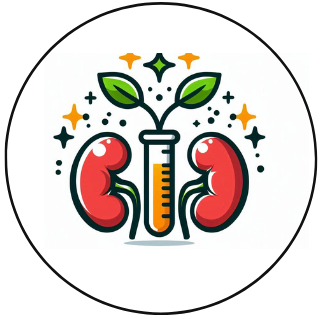When managing kidney health, one of the most important skills you can develop is learning how to read food labels. Not all foods are created equal, and what you eat can significantly impact the well-being of your kidneys. In this guide, we will walk you through the process of reading food labels to make smarter, kidney-friendly choices.
Why Reading Food Labels Is Essential for Kidney Health
Your kidneys play a critical role in filtering waste and balancing electrolytes in the body. Unfortunately, certain nutrients like sodium, potassium, and phosphorus, which are common in many processed foods, can put extra strain on your kidneys. That’s why it’s crucial to understand food labels and make healthier, more informed decisions.
What to Look for on a Food Label
Here’s a breakdown of the key factors to focus on when reading food labels to determine if a food is kidney-friendly:
1. Sodium Content
Sodium is one of the biggest concerns for individuals with kidney issues. High sodium levels can lead to fluid retention, increase blood pressure, and overwork your kidneys.
- Look for: Foods with less than 5% of the daily value (DV) for sodium per serving. If that limits you too much, stay below 10%.
- Avoid: Processed foods with 20% or more of the DV for sodium. Opt for items labeled “low sodium” or “no added salt.”
Tip: Fresh fruits and vegetables, as well as whole grains, are generally lower in sodium compared to processed or packaged foods.
2. Potassium Levels
People with kidney disease or those at risk need to limit potassium intake. High potassium levels can lead to dangerous heart complications.
- Look for: Foods that list potassium content on the label. Choose foods with less than 200 mg per serving if you’re following a low-potassium diet.
- Avoid: Foods labeled as “high in potassium” or those containing ingredients like potassium chloride.
Tip: Common high-potassium foods include bananas, oranges, potatoes, and spinach. Instead, opt for low-potassium alternatives like apples, berries, and cucumbers.
3. Phosphorus Additives
Phosphorus is another nutrient to watch out for, particularly in processed foods. Excess phosphorus can weaken bones and cause heart damage in people with kidney disease.
- Look for: The words “phosphate” or “phosphoric acid” in the ingredients list.
- Avoid: Packaged foods that contain phosphorus additives. Instead, choose fresh, whole foods that naturally contain lower phosphorus levels.
Tip: Dairy products, colas, and many baked goods are high in phosphorus. Plant-based alternatives like almond or rice milk may be better options for your kidneys. Remember to use moderation if you do choose to eat dairy and baked goods. Homemade baked goods may be best.
4. Protein Content
While protein is essential for overall health, too much can overwork your kidneys. It’s important to monitor protein intake, especially if you have compromised kidney function.
- Look for: The protein content per serving and choose lower-protein options unless advised otherwise by your healthcare provider.
- Avoid: High-protein processed foods like canned meats, certain cheeses, and protein bars. Balance your diet with plant-based protein sources when possible.
Tip: Moderation is key. Speak with a dietitian to determine the right protein intake based on your health condition.
5. Added Sugars
Sugary foods can contribute to obesity, diabetes, and high blood pressure – all of which can worsen kidney problems.
- Look for: Foods with 5 grams or less of added sugar per serving. Choose items labeled “unsweetened” or “no added sugars.”
- Avoid: Sweets, sugary drinks, and processed foods that list ingredients like high fructose corn syrup or cane sugar at the top.
Tip: Consider naturally sweet options like berries and apples that are kinder to your kidneys than processed sweets.
Understanding the Ingredients List
The ingredients on a food label are listed in order of quantity, meaning the first few ingredients make up the bulk of the product. When reading through the ingredients list, watch out for harmful substances like sodium, phosphorus additives, and artificial flavorings. The simpler the ingredients list, the better the food is likely to be for your kidneys.
Key Terms to Avoid:
- Sodium chloride
- Phosphates
- Potassium chloride
- Monosodium glutamate (MSG)
- Preservatives
Key Terms to Look For:
- Low sodium
- Unsweetened
- No added phosphorus
- Fresh or whole ingredients
Final Tips for Kidney-Friendly Shopping
- Focus on Whole Foods: Fresh fruits, vegetables, lean meats, and whole grains are your best bet for kidney health. They are typically lower in sodium, potassium, and phosphorus.
- Limit Processed Foods: Canned, frozen, and prepackaged foods often contain high levels of sodium and phosphorus. Always check the label!
- Be Careful with “Healthy” Buzzwords: Foods labeled “organic” or “natural” can still be high in sodium or potassium. Read the label carefully to ensure it fits your dietary needs.
Conclusion
Reading food labels is one of the most effective ways to manage your kidney health and ensure you’re eating kidney-friendly foods. By understanding the sodium, potassium, phosphorus, protein, and sugar content, you can make better choices that help protect your kidneys from unnecessary strain.
Take control of your diet, one label at a time, and make kidney health a priority. For more tips and information on maintaining a kidney-friendly lifestyle, explore our other articles.

